Abstract
OBJECTIVE: To evaluate the impact of computerized ordering guidelines on clinician ordering patterns for neuroradiology imaging studies of the head. DESIGN: A retrospective analysis was performed using a pre-post design. A 9-week control period was followed by an 8-week intervention period. SUBJECTS: All clinicians who placed an order for either an MRI of the brain or a CT of the head on inpatients using a computerized order entry system. METHODS: We designed, implemented, and evaluated a decision support system for the implementation of test ordering guidelines. Changes in ordering patterns were evaluated with a Chi-square analysis. RESULTS: 742 tests were ordered in the pre-intervention period, while 704 studies were ordered after the intervention. A significant change in the distribution of tests ordered resulted from the intervention (p=0.048). Changes trended toward the guideline recommendations for all tests considered. 60% of users receiving a recommendation ordered the suggested study. DISCUSSION: Our intervention successfully influenced clinician ordering patterns. Examination of detailed usage patterns may aid in further quality improvement of both the guidelines and the decision support tool used to implement them.
Full text
PDF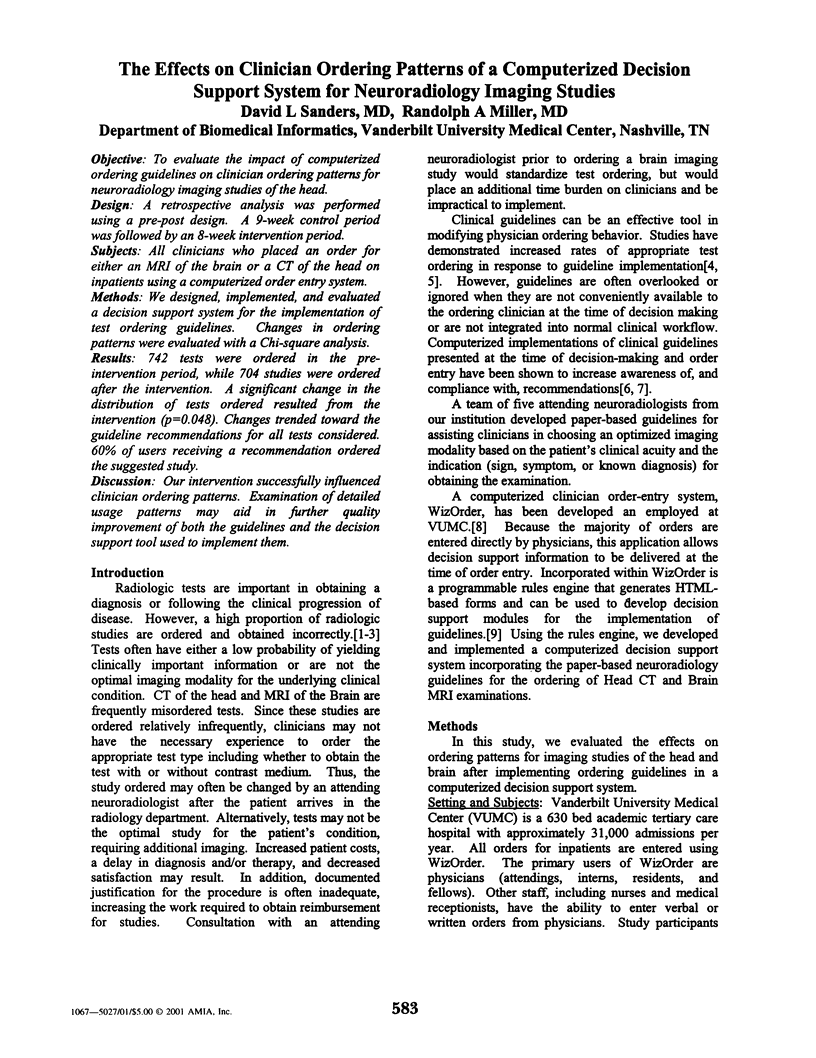
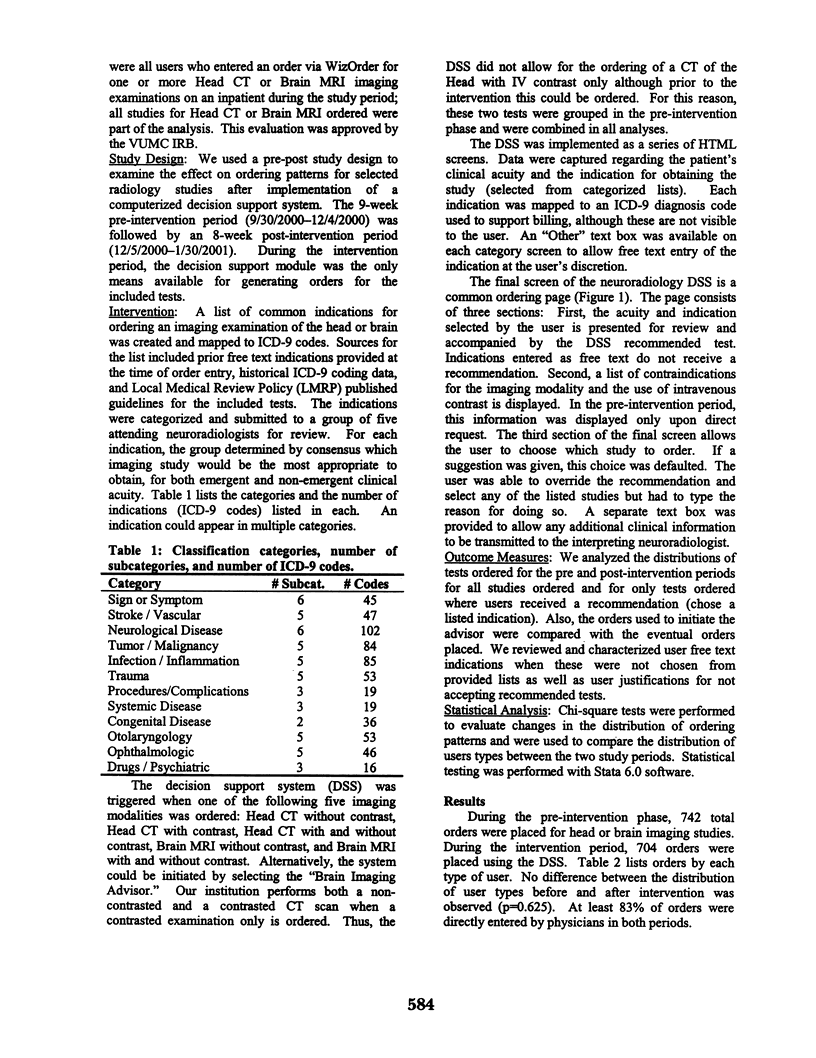
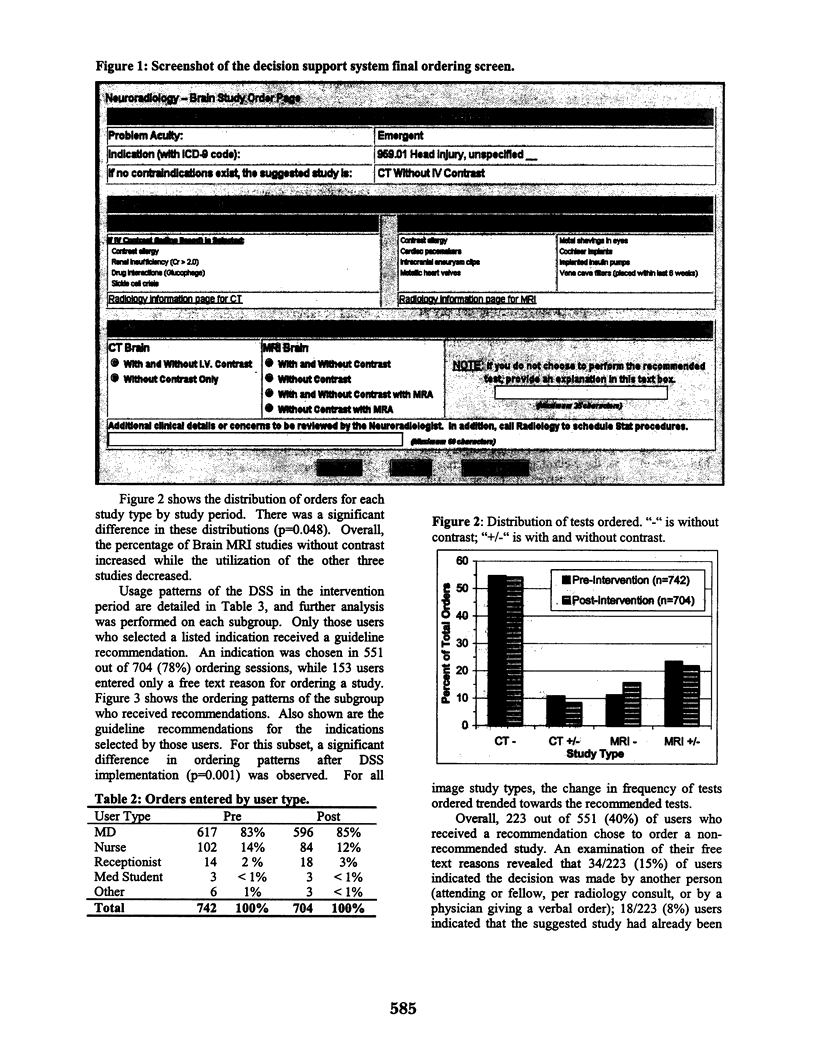
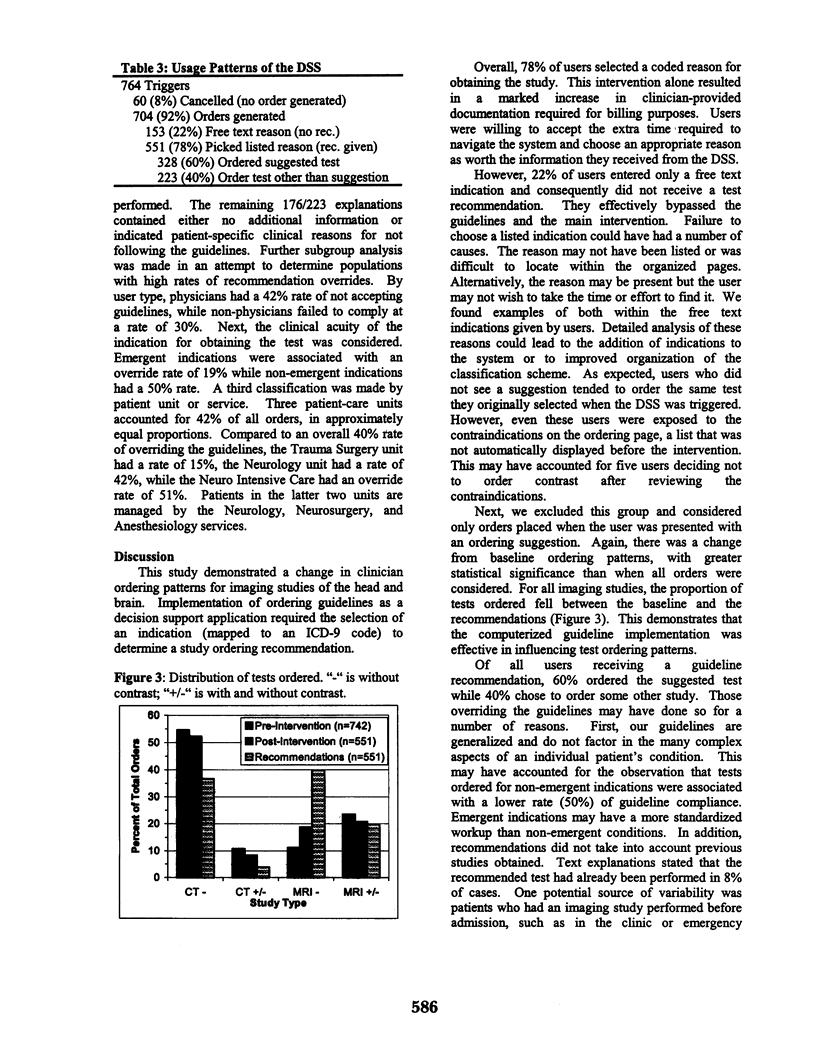
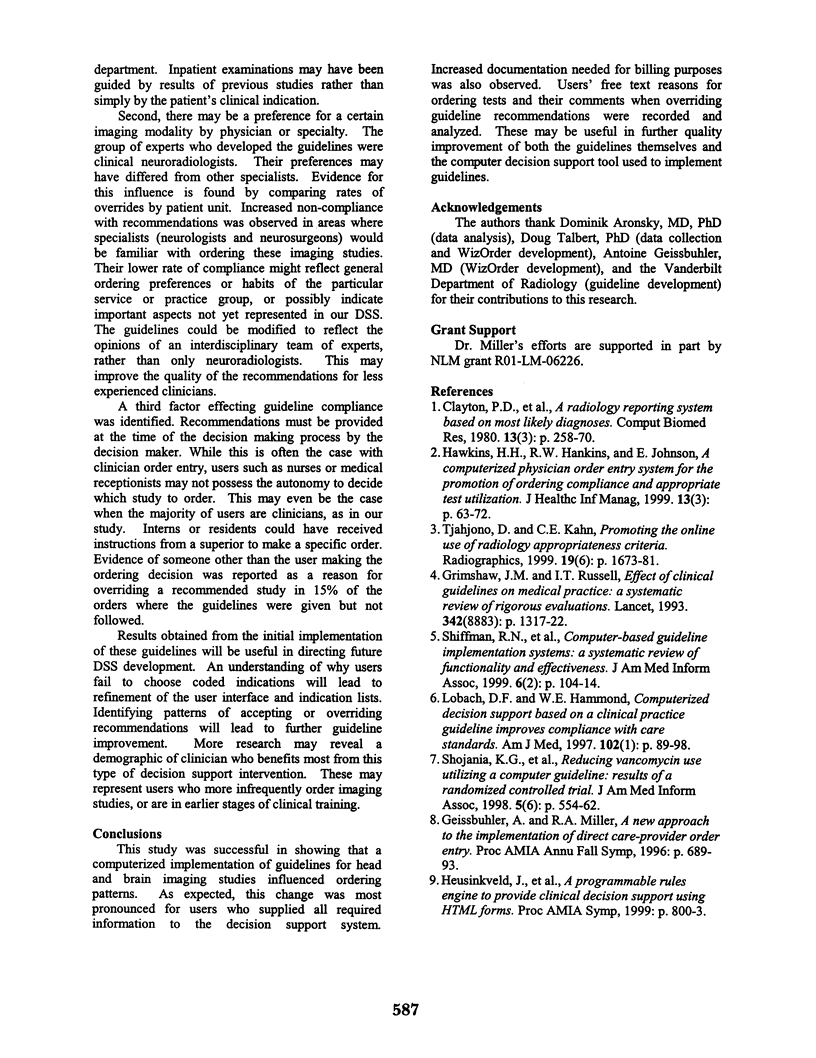
Selected References
These references are in PubMed. This may not be the complete list of references from this article.
- Clayton P. D., Ostler D. B., Gennaro J. L., Beatty S. S., Frederick P. R. A radiology reporting system based on most likely diagnoses. Comput Biomed Res. 1980 Jun;13(3):258–270. doi: 10.1016/0010-4809(80)90020-8. [DOI] [PubMed] [Google Scholar]
- Geissbühler A., Miller R. A. A new approach to the implementation of direct care-provider order entry. Proc AMIA Annu Fall Symp. 1996:689–693. [PMC free article] [PubMed] [Google Scholar]
- Grimshaw J. M., Russell I. T. Effect of clinical guidelines on medical practice: a systematic review of rigorous evaluations. Lancet. 1993 Nov 27;342(8883):1317–1322. doi: 10.1016/0140-6736(93)92244-n. [DOI] [PubMed] [Google Scholar]
- Hawkins H. H., Hankins R. W., Johnson E. A computerized physician order entry system for the promotion of ordering compliance and appropriate test utilization. J Healthc Inf Manag. 1999 Fall;13(3):63–72. [PubMed] [Google Scholar]
- Heusinkveld J., Geissbuhler A., Sheshelidze D., Miller R. A programmable rules engine to provide clinical decision support using HTML forms. Proc AMIA Symp. 1999:800–803. [PMC free article] [PubMed] [Google Scholar]
- Lobach D. F., Hammond W. E. Computerized decision support based on a clinical practice guideline improves compliance with care standards. Am J Med. 1997 Jan;102(1):89–98. doi: 10.1016/s0002-9343(96)00382-8. [DOI] [PubMed] [Google Scholar]
- Shiffman R. N., Liaw Y., Brandt C. A., Corb G. J. Computer-based guideline implementation systems: a systematic review of functionality and effectiveness. J Am Med Inform Assoc. 1999 Mar-Apr;6(2):104–114. doi: 10.1136/jamia.1999.0060104. [DOI] [PMC free article] [PubMed] [Google Scholar]
- Shojania K. G., Yokoe D., Platt R., Fiskio J., Ma'luf N., Bates D. W. Reducing vancomycin use utilizing a computer guideline: results of a randomized controlled trial. J Am Med Inform Assoc. 1998 Nov-Dec;5(6):554–562. doi: 10.1136/jamia.1998.0050554. [DOI] [PMC free article] [PubMed] [Google Scholar]
- Tjahjono D., Kahn C. E., Jr Promoting the online use of radiology appropriateness criteria. Radiographics. 1999 Nov-Dec;19(6):1673–1681. doi: 10.1148/radiographics.19.6.g99no301673. [DOI] [PubMed] [Google Scholar]


